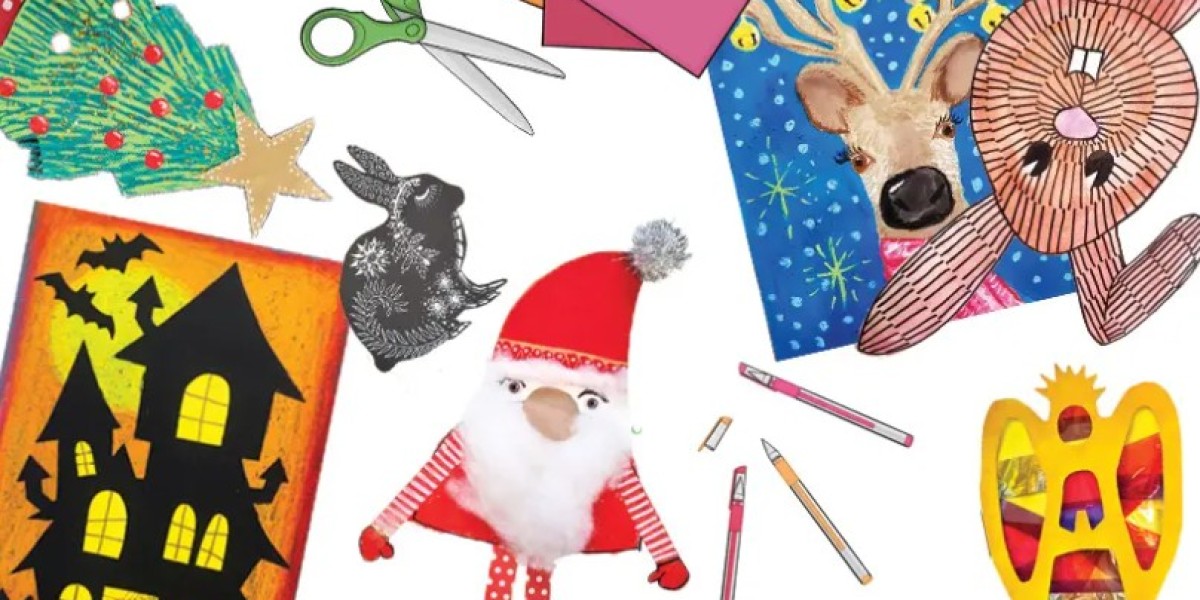Art Lessons for Kids: Unlocking Creativity
In today’s fast-paced world, art lesson for kids offer a much-needed escape and an opportunity to express creativity. Art is more than just a subject in school; it is a vital component in the development of young minds. Whether your child is drawing, painting, sculpting, or engaging in any other form of art, these activities provide a foundation for growth and learning. Let's delve into the myriad benefits and the best practices to make art lessons an enriching experience for children.
The Importance of Art in Child Development
Cognitive Skills Enhancement
Art lessons significantly contribute to the cognitive development of children. When kids engage in creative activities, they learn to think critically and solve problems. The process of creating art involves planning, decision-making, and the ability to see a project through from start to finish. These skills are transferable to other areas of learning and life.
Emotional Expression and Mental Health
Art is a powerful medium for expressing emotions. It allows children to communicate feelings that they might not have the vocabulary to express verbally. This emotional outlet is crucial for mental health, helping kids manage stress, anxiety, and other emotional challenges.
Fine Motor Skills Development
The act of drawing, painting, or crafting improves fine motor skills. These activities require hand-eye coordination and precision, which are essential for daily tasks such as writing, tying shoelaces, and buttoning clothes.
Types of Art Lessons for Kids
Drawing and Sketching
Drawing is one of the most fundamental forms of art. It helps children develop visual analysis skills and improves hand-eye coordination. Lessons can start with basic shapes and lines, progressing to more complex figures and scenes as the child’s skills improve.
Painting
Painting is an excellent way for kids to explore colors and textures. It also teaches them about mixing colors and understanding hues and shades. Whether using watercolors, acrylics, or oils, painting lessons can be both fun and educational.
Sculpture and Clay Modeling
Working with clay and other materials to create sculptures helps children develop spatial awareness and three-dimensional thinking. It’s a hands-on activity that can be incredibly engaging and rewarding.
Mixed Media and Collage
Mixed media art lessons encourage kids to use various materials and techniques in a single artwork. This can include paper, fabric, paint, and found objects. It’s a great way for children to explore different textures and develop a sense of composition.
Digital Art
With the rise of technology, digital art lessons are becoming increasingly popular. Using tablets and software, kids can learn to create art digitally. This skill is particularly relevant in today's digital age and can open up numerous career opportunities in the future.
How to Choose the Right Art Lessons for Your Child
Assess Your Child’s Interests
The first step in choosing the right art lessons is to understand your child’s interests. Do they enjoy drawing more than painting? Are they fascinated by sculptures? Understanding their preferences will help you select a program that keeps them engaged.
Consider the Teacher’s Expertise
The instructor's qualifications and teaching style are crucial. Look for teachers who are not only skilled artists but also have experience working with children. A good teacher should be patient, encouraging, and able to tailor lessons to the child's individual needs.
Class Size and Environment
Smaller class sizes often provide a better learning environment as they allow for more personalized attention. Additionally, the classroom should be well-equipped with the necessary materials and tools to facilitate a variety of art activities.
Incorporating Art Lessons into Daily Life
Create a Home Art Space
Dedicate a space in your home where your child can create art freely. Stock it with basic supplies like paper, crayons, markers, and paints. This space should be easily accessible, encouraging your child to engage in art whenever inspiration strikes.
Encourage Regular Practice
Like any skill, regular practice is key to improvement. Encourage your child to spend time on art daily, even if it's just for a few minutes. This routine helps develop discipline and enhances their skills over time.
Participate in Art Together
Joining your child in art activities can be a bonding experience. It shows them that you value their interests and can provide opportunities for you to teach and learn from each other.
Benefits of Art Lessons Beyond the Classroom
Improved Academic Performance
Studies have shown that children who participate in art activities tend to perform better academically. The skills learned in art, such as critical thinking and problem-solving, translate into improved performance in subjects like math and science.
Cultural Awareness and Appreciation
Art lessons often include learning about different cultures and historical contexts of various art forms. This exposure helps children develop a broader understanding and appreciation of the world around them.
Building Self-Esteem
Completing an art project gives children a sense of accomplishment. This boosts their self-esteem and encourages them to take on new challenges. Positive reinforcement from teachers and parents further enhances this effect.
Conclusion
Art lessons for kids are an invaluable part of their development, providing numerous cognitive, emotional, and social benefits. From enhancing fine motor skills to fostering creativity and critical thinking, the advantages are vast and far-reaching. By choosing the right type of art lessons and creating a supportive environment at home, you can help your child unlock their full potential and cultivate a lifelong appreciation for the arts.








